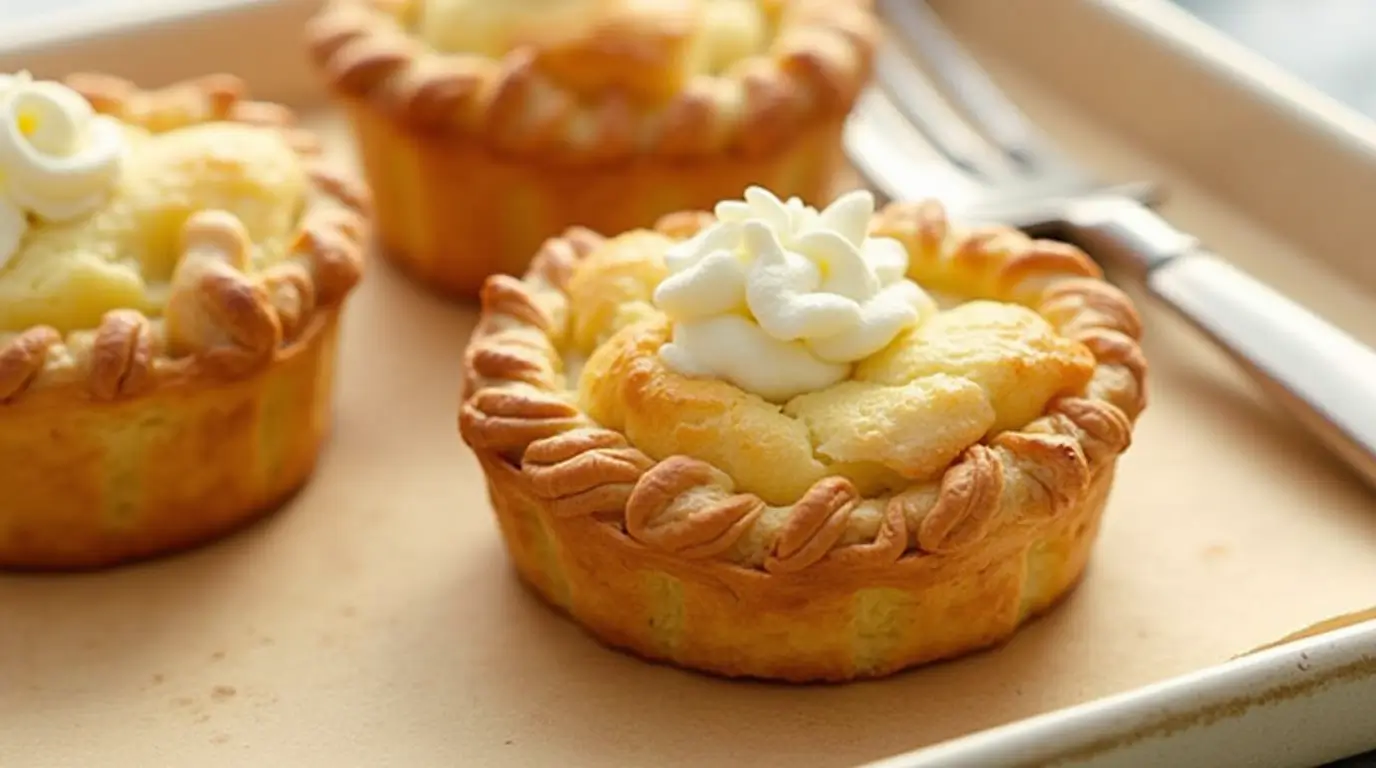If you’ve ever tasted the delicate layers of puff pastry, you already know why it’s a favorite in both savory and sweet dishes. But have you ever wondered how this flaky, buttery dough is made? Or perhaps, you’re wondering if it’s worth the effort when there are so many ready-made options available. Well, here’s the truth: Nothing compares to homemade puff pastry. The indulgent texture, the mouthwatering scent, and the endless versatility of puff pastry are all worth the time it takes to make it from scratch.
In this post, we’re going to guide you through making your own puff pastry, from the ingredients to the step-by-step instructions, ensuring you understand exactly how to achieve perfect, golden layers. Whether you’re a seasoned baker or a beginner, this guide will help you achieve puff pastry perfection in no time. Ready to indulge in the buttery, flaky goodness? Let’s dive in!
Table of Contents
Ingredients for Homemade Puff Pastry
Making puff pastry requires just a few basic ingredients, but the magic lies in how you combine them to create those irresistible layers. Here’s what you’ll need:
- All-purpose flour: 2 1/2 cups, plus extra for dusting
- Cold unsalted butter: 1 1/2 cups (cut into small cubes)
- Cold water: 1/2 cup
- Salt: 1 teaspoon
- Vinegar: 1 teaspoon (optional, but it helps relax the dough)
Substitutions:
- You can use whole wheat flour for a healthier version, though the texture may be slightly denser.
- If you’re dairy-free, substitute the butter with plant-based butter, though the results may vary slightly.
The key to great puff pastry is keeping the butter cold throughout the process, so be sure to handle everything as quickly and efficiently as possible to keep those layers intact.
Timing: How Long Will It Take?
Making puff pastry may seem daunting, but don’t let the time deter you! Here’s a breakdown of the time involved:
- Preparation time: 20 minutes (for mixing and initial folding)
- Chill time: 60 minutes (divided into resting periods)
- Total time: 90 minutes (which is about 20% less time than many traditional puff pastry recipes that require multiple rounds of resting)
Though this may seem like a lot of time, it’s important to allow the dough to chill between folds. This resting period ensures the butter doesn’t melt into the dough, allowing it to create those signature, flaky layers when baked.
Step-by-Step Instructions: Making Puff Pastry from Scratch
Step 1: Combine the Dry Ingredients
Start by sifting the flour and salt into a large bowl. This will help ensure there are no lumps, and that the salt is evenly distributed.
Step 2: Cut in the Butter
Add the cold butter cubes to the flour mixture. Using a pastry cutter or your fingertips, work the butter into the flour until the mixture resembles coarse crumbs with pea-sized chunks of butter. This is the base for those flaky layers!
Step 3: Add the Water and Vinegar
Sprinkle the cold water and vinegar (if using) over the flour-butter mixture. Gently mix with a fork until the dough starts to come together. You may need to add a little more water, just a tablespoon at a time, until the dough holds together but is not too sticky.
Step 4: Rest the Dough
Shape the dough into a rough rectangle, wrap it in plastic wrap, and place it in the fridge for at least 30 minutes. This resting step allows the dough to chill, making it easier to roll out later.
Step 5: Roll and Fold
After the dough has rested, lightly flour your work surface and begin rolling it out into a long rectangle. Once it’s rolled out, fold the dough into thirds, like a letter. Turn it 90 degrees and roll it out again into a rectangle, then fold it into thirds again. Repeat this process three to four times, then chill the dough for another 30 minutes.
Step 6: Final Roll and Shape
After the final resting period, roll the dough out to your desired thickness (usually about 1/8 inch). You can now use it for your favorite recipes, such as making tarts, turnovers, or a classic croissant.
Nutritional Information
Making puff pastry from scratch may take a bit of effort, but the nutritional benefits are more in your control compared to store-bought versions. Here’s an approximation of the nutritional breakdown for a single serving (1/8 of the batch):
- Calories: 200
- Fat: 15g
- Saturated Fat: 9g
- Carbohydrates: 20g
- Protein: 2g
- Fiber: 1g
While puff pastry is indulgent and high in fat, it’s a treat that can be enjoyed in moderation, especially when you make it from scratch, ensuring you know exactly what’s going into your dough.
Healthier Alternatives for Puff Pastry
Although the traditional recipe calls for butter, there are a few healthy tweaks you can try without compromising on taste:
- Butter Substitutes: You can substitute part of the butter with olive oil for a lighter version.
- Whole Wheat Flour: As mentioned earlier, using whole wheat flour instead of all-purpose flour adds fiber and nutrients.
- Lower Fat Fillings: When making puff pastry dishes, such as savory tarts, consider using low-fat cheese or adding more vegetables to cut down on fat content.
Serving Suggestions
Puff pastry is one of the most versatile doughs out there. Here are a few creative serving ideas:
- For Savory Dishes: Serve puff pastry with your favorite fillings like spinach and cheese, mushrooms, or chicken. They make great appetizers or light dinners.
- For Sweet Treats: Puff pastry is perfect for creating decadent desserts such as apple turnovers, fruit tarts, or even puff pastry cinnamon rolls.
- Pair with Dips: If you’re serving puff pastry appetizers, pair them with a rich dipping sauce like garlic butter or a tangy yogurt dip.
The options are endless, and the buttery, flaky goodness will be the star of any meal.
Common Mistakes to Avoid
Making puff pastry can be tricky, and even a small mistake can affect the texture and flavor. Here are some common pitfalls:
- Overworking the Dough: It’s tempting to keep mixing or kneading, but overworking the dough will result in a tough pastry. Handle the dough gently and only as much as necessary.
- Not Keeping the Butter Cold: If the butter melts into the dough, it won’t create those perfect flaky layers. Keep the butter and dough cold during the process.
- Skipping the Resting Periods: Resting the dough between folds is essential to getting the perfect texture. Don’t skip this step!
Storing Tips for Puff Pastry
If you have leftovers, or you’d like to prep ahead, here’s how to store your puff pastry:
- Unbaked Dough: Wrap the dough tightly in plastic wrap and store it in the fridge for up to 2 days. You can also freeze it for up to 3 months.
- Baked Pastry: Store any baked puff pastry in an airtight container for up to 2 days. If freezing, place it in a single layer and wrap it well to prevent freezer burn.
Conclusion
Making puff pastry from scratch is definitely worth the effort. The result is a perfectly flaky, buttery dough that elevates any dish, whether it’s a savory appetizer or a sweet dessert. With our easy-to-follow instructions and tips, you can indulge in the buttery, flaky goodness of puff pastry at home!
Give it a try, and don’t forget to share your feedback with us. If you enjoyed this post, check out our other baking recipes for more delicious ideas!
FAQs
1. Can I use store-bought puff pastry instead of making my own? Yes, if you’re short on time, store-bought puff pastry can be a great alternative. However, homemade pastry will always have that extra layer of love and flavor.
2. How do I know when the dough is ready to roll out? The dough should be firm and chilled but not too hard. If it feels too soft, give it a bit more time to chill.
3. Can I make puff pastry in advance and freeze it? Absolutely! Puff pastry freezes beautifully. Just wrap it well in plastic wrap and store it in the freezer for up to 3 months.

